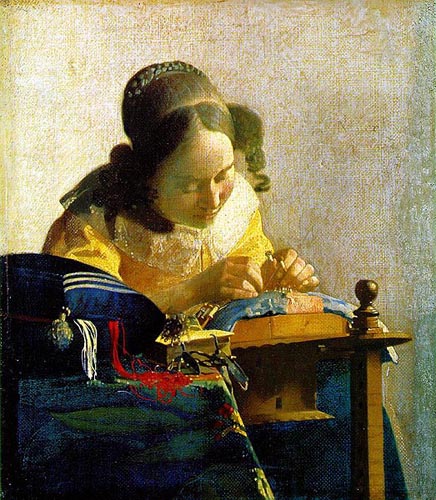The Rhino Horn: Violent Aesthetic Power
Salvador Dali on Vermeer’s ”The Lacemaker”: ”Up until now The Lacemaker has always been considered a very peaceful, very calm painting, but for me it is possessed by the most violent aesthetic power, to which only the recently discovered antiproton can be compared.” This is a bit unsettling, since Vermeer painted women with few exclusions. He was financially destitute and dependent on his mother-in-law, Maria Thins.Furthermore, he lived in his mother-in-law’s house. According to some sources (researched through legal records) there was also domestic violence against women in the Vermeer family, which was the background of events resulting in ”The Milkmaid” painting.
According to Dali, all curved surfaces of the human body have the same geometric spot in common. To Dali, ”The Lacemaker” is morphologically a rhinoceros horn and this painting is comprised of many horns. Dali asserted a ”latent rhinocerization” in the works of all the great masters. Whether consciously intentional or inconscient, a geometric cone with a rounded tip curved toward heaven or earth closely resembling that of a rhinoceros horn is to be found in most great art. Dali claimed that all of his images could be deconstructed to resemble rhinoceros horns and in a battle between a rhino and ”The Lacemaker”, the painting would win since it possesses multiple horns.
Some historians believe the horn of the rhino is in fact the horn of the legendary unicorn and a symbol of wisdom and chastity. The horn of the rhino is not made of bone, but of skin and hair and is valued in many cultures for alleged aphrodisiac qualities and as a symbol of male potency and power.

